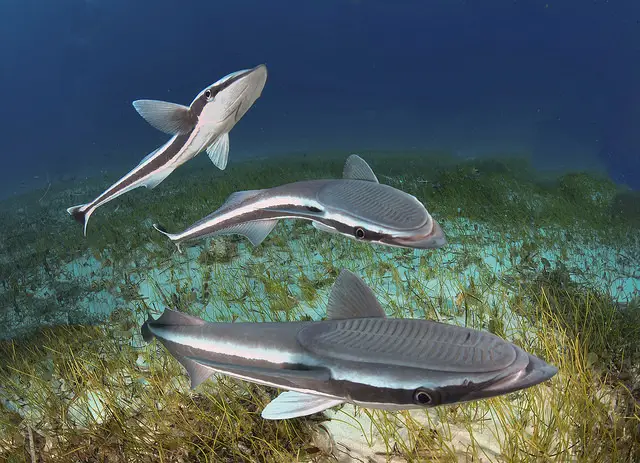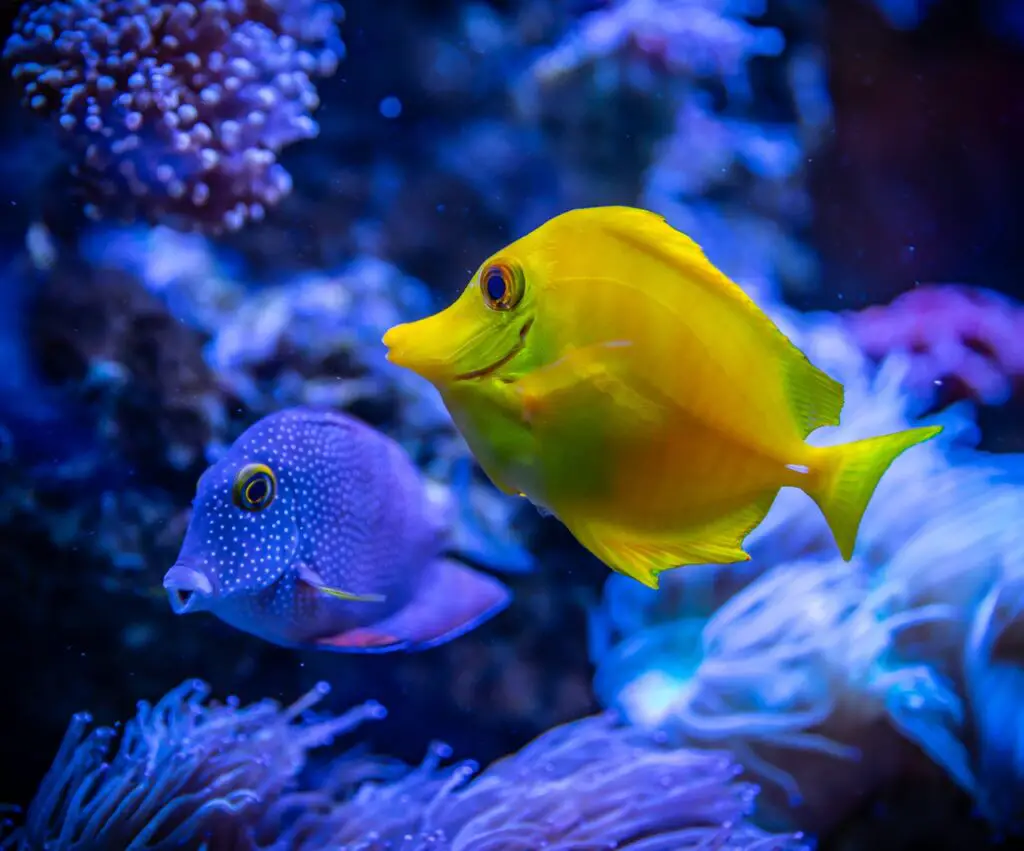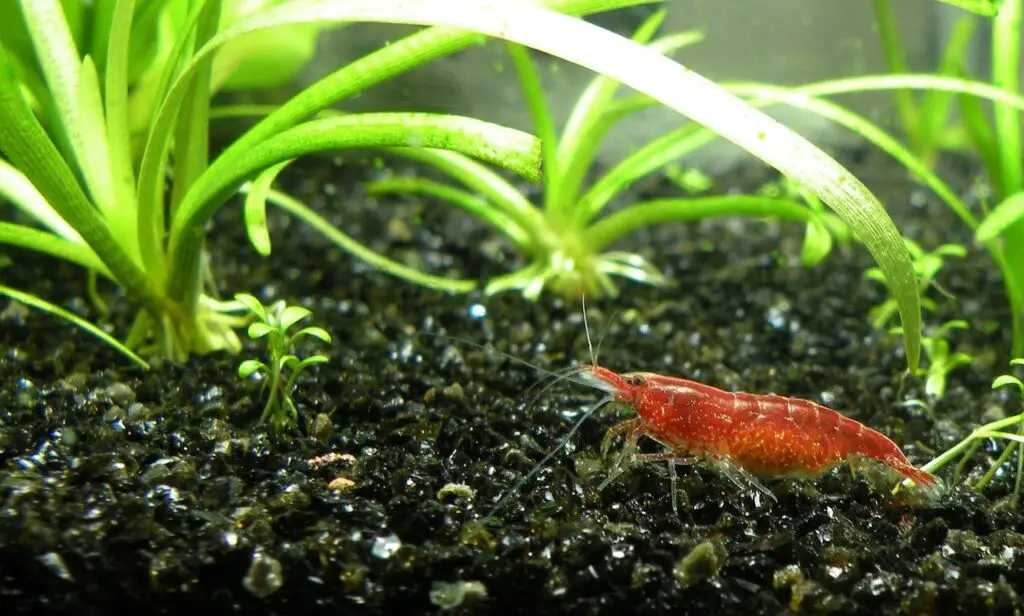Have you ever watched Shark Week on television? Or perhaps you just watched a nature show about these impressive creatures? Have you ever noticed that there always seem to be small fish that swim with sharks and attach themselves to them?
What are the fish that swim with sharks?
Remoras are the small fish that are often seen traveling alongside sharks.
In this article, I will discuss the remora fish that have formed an uncanny relationship with the shark.
What is the Remora?
The animal kingdom has some rather interesting relationships, and some are quite unlikely. In the ocean deep, we see the connection between remora fish and the shark.
Also called the suckerfish, the remora is a type of ray-finned fish that usually grows between 12-43 inches, depending on the species. They are distinctive because their dorsal fins take on the form of a sucker-like structure.
This structure creates a sucking action against the skin of a larger ocean animal or fish.
The most common hosts for a remora are sharks, whales, rays, turtles, and dugongs. Smaller species attach themselves to swordfish and tuna or travel in the mouths of swordfish.
What Do Remora Look Like?
The remora is usually black or dark brown with a long, flat head and a short body. The body is covered with smooth, balanced scales.
The suction disc on the head is oval-shaped and has many paired crosswise plates. They have several tiny, pointed teeth that curve slightly inward. Their upper jaw is shorter than the lower jaw.
How Big Do Remoras Get?
Remoras can be as small as a foot or up to almost four feet, depending on the species.
Remoras are found in the ocean, for the most part, where they can easily attach themselves to a large host.
The suction-like disc usually begins to form when the fish are very young, and as they reach 3cm, it is fully developed, allowing them to stick to other animals.
Why Do Remora Attach Themselves to Sharks?
Remora attach themselves to the bellies of sharks and feed on scraps left over from the shark’s feeding sessions. By feeding on pieces of food, the remora eats the parasites left over.
These parasites would otherwise cause irritation and harm to the shark’s mouth.
What is so interesting is that the shark seems to understand that the remora is a friend and not a foe. They have been observed slowing down around them and allowing them to “hitch a ride” while giving the remora protection.
Do Sharks Eat Remoras?
In most cases, it’s quite the opposite. Sharks seem to favor the remora’s presence and understand that they are beneficial.
In some cases, the lemon and sandbar sharks have been recorded as acting rather aggressively towards the little suckers, but in general, it seems to be a cordial relationship.
It’s also possible that the remora is just so small that the shark doesn’t even bother trying to eat them.
Why Do Remora Fish Swim With Sharks?
- Protection
- A Ride
- Food
Remora fish swim with sharks for three different reasons.
Protection
The open ocean is a scary place for smaller fish and doesn’t offer enough places for the little guys to hide from enemies. And over time, the smaller fish have learned to take advantage of the bigger guys.
Sharks are one of the most feared predators in the ocean, and it does the smaller fish well to stick by them. By swimming with sharks, remora fish are much safer than they would be on their own.
A Free Ride
If you consider the current that a shark produces as she swims gracefully through the water, it’s not hard to imagine why a remora fish would stay close by. It’s basically a free ride!
By hugging tight to the shark, the remora fish saves energy and make great headway.
Food
By sticking close to the shark, the remora also gets a free meal. Sharks are not known for their eating etiquette, but the remora is happy to feed on all the leftover crumbs. These passengers readily grab all the small pieces of food.
Remoras also feed on the dead skin and parasites that form on and around the shark’s mouth. This benefits not only the remora but the shark as well.
Are Remoras Parasites?
While it’s easy to consider the remora a freeloader, they really aren’t. Because they eat the leftovers from the shark, they do no damage to them. They aren’t considered a parasite because the relationship between them is beneficial for both.
How Do Remoras Stick?
These hitchhikers of the sea catch free rides with a special fin on their heads. These disk-like fins are made of flexible membranes that can move around and generate suction, and they can increase or decrease the suction when they move back and forth.
These suction cups are so strong that the remora can stay attached to the animals even while they are making powerful leaps out of the ocean, such as whales and dolphins do.
Shark skin is very rough, and the shark is a very fast swimmer, so it’s amazing how much the remora can stay stuck to them.
Can Remoras Hurt You?
The remora is not dangerous to the shark, and they aren’t dangerous to humans either. If anything, divers may find the remora more obnoxious. Because they aren’t terribly intelligent, they are known to attach themselves to the wetsuits of divers.
As long as the diver is protected by their wetsuit, the remora will do no harm. If anything, it’s almost funny as divers are seen trying to pry remoras from their diving masks.
If a remora attached itself directly to the skin of a diver, it’s possible there may be a rash or an irritation on the skin.
Conclusion
The relationship between sharks and remoras is pretty remarkable. The shark offers protection, food, and travel, while the remora takes care of the leftover food and parasites that gather around the shark.
They two work together in perfect unison.



